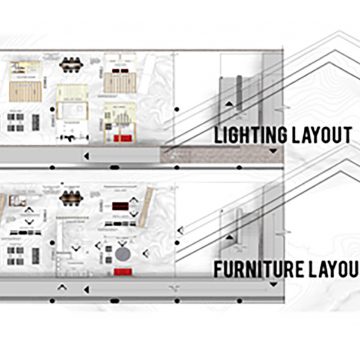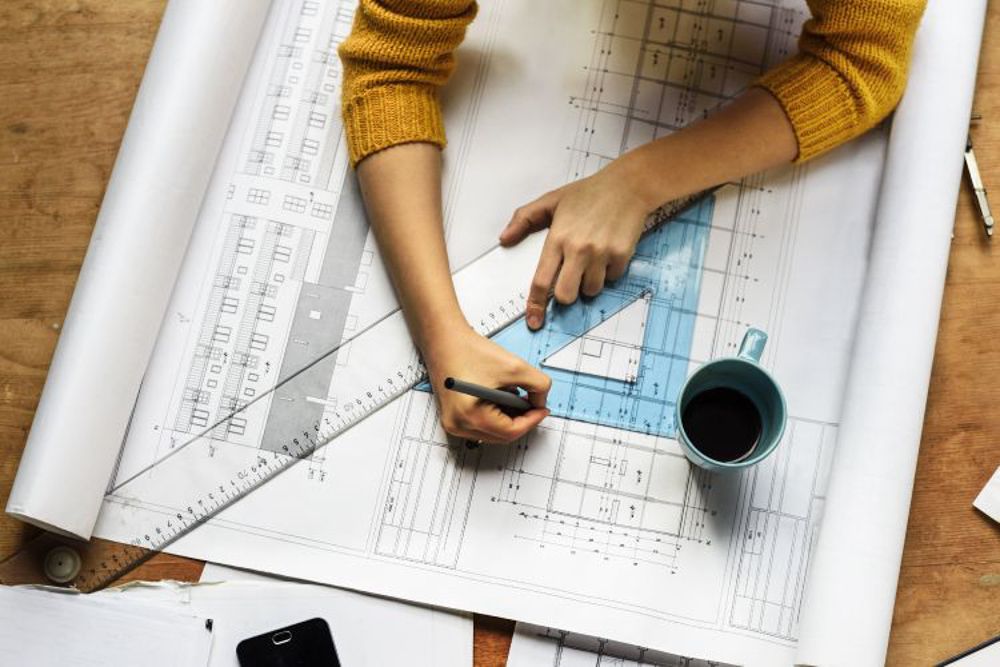Premier Winchester Architecture Services for Unique Home Designs
Premier Winchester Architecture Services for Unique Home Designs
Blog Article
The Art of Balance: Just How Interior Design and Home Engineer Collaborate for Stunning Outcomes
In the realm of home style, striking a balance between aesthetic appeals and functionality is no little accomplishment. This fragile balance is achieved via the unified collaboration in between indoor designers and architects, each bringing their distinct know-how to the table. Keep with us as we check out the complexities of this collaborative procedure and its transformative effect on home design.
Recognizing the Core Distinctions Between Interior Layout and Home Design
While both Interior Design and home style play crucial functions in developing visually pleasing and functional rooms, they are inherently various self-controls. Home style mainly concentrates on the architectural aspects of the home, such as constructing codes, security regulations, and the physical construction of the space. It manages the 'bones' of the structure, functioning with spatial dimensions, bearing walls, and roofing designs. On the various other hand, Interior Design is more concerned with boosting the sensory and aesthetic experience within that structure. It entails selecting and preparing furniture, picking color pattern, and incorporating ornamental components. While they operate in tandem, their duties, responsibilities, and locations of knowledge deviate significantly in the development of an unified home environment.
The Harmony In Between Home Style and Inside Design
The synergy between home design and Interior Design hinges on a common vision of layout and the enhancement of functional aesthetic appeals. When these 2 fields line up sympathetically, they can transform a living space from common to extraordinary. This partnership needs a much deeper understanding of each self-control's concepts and the capacity to develop a natural, cosmetically pleasing atmosphere.
Unifying Style Vision
Merging the vision for home style and Interior Design can produce an unified home that is both functional and aesthetically pleasing. The balance starts with an incorporated mindset; engineers and indoor developers collaborate, each bringing their knowledge. This unison of ideas forms the layout vision, a plan that overviews the job. This shared vision is vital for consistency throughout the home, guaranteeing a fluid change from outside design to interior areas. It advertises a collaborating technique where architectural elements enhance Interior Design components and vice versa. The result is a natural space that shows the property owner's taste, character, and lifestyle. Therefore, unifying the design vision is essential in blending design and Interior Design for magnificent results.
Enhancing Practical Aesthetic Appeals
How does the harmony between home architecture and Interior Design enhance practical aesthetics? This harmony allows the production of spaces that are not just aesthetically appealing however additionally conveniently functional. Architects lay the groundwork with their architectural layout, guaranteeing that the area is efficient and functional. The indoor developer then complements this with very carefully picked components that enhance the appearances without compromising the functionality. This harmonious partnership can lead to homes that are both beautiful and liveable. An engineer could design a house with large windows and high ceilings. The indoor developer can after that emphasize these attributes with large curtains and high plants, specifically, hence boosting the visual allure while preserving the practical benefits of natural light and space.
Value of Partnership in Creating Balanced Spaces
The collaboration in between interior developers and architects is crucial in producing well balanced rooms. It brings harmony in between style and style, bring to life rooms that are not only cosmetically pleasing however also useful. Exploring effective collaborative methods can provide insights right into exactly how this harmony can be successfully attained.
Harmonizing Layout and Architecture
Balance, an essential element of both Interior Design and design, can just really be accomplished when these 2 fields work in consistency. This harmony is not simply a visual factor to consider; it affects the functionality, sturdiness, and eventually, the livability of a space. Interior designers and developers must comprehend each various other's roles, appreciate their expertise, and communicate successfully. They have to consider the interplay of structural components with design, the circulation of rooms, and the influence of light and shade. This collaborative process leads to a natural, balanced style where every component adds and has a purpose to the overall visual. Balancing style and design is not simply regarding producing stunning areas, but about crafting spaces that function flawlessly for their inhabitants.
Successful Joint Methods

Instance Researches: Successful Combination of Design and Style
Taking a look at several instance research studies, it becomes read this post here noticeable how the successful integration of Interior Design and architecture can change a space. The Glass Home in Connecticut, renowned for its minimalistic style, is one such example. Engineer Philip Johnson and interior developer Mies van der Rohe collaborated to produce an unified balance between the inside and the structure, leading to a smooth flow from the exterior landscape to the internal living quarters. Another exemplar is the Fallingwater House in Pennsylvania. Engineer Frank Lloyd Wright and interior designer Edgar Kaufmann Jr.'s collective initiatives result in a stunningly unique home that mixes with its natural environments. These study underline the profound influence of an effective design and architecture cooperation.

Getting Rid Of Challenges in Design and Architecture Collaboration
Regardless of the obvious benefits of an effective partnership in between Interior Design and style, it is not without its difficulties. Interaction problems can arise, as both celebrations may utilize various terms, understandings, and techniques in their job. This can cause misconceptions and delays in task conclusion. One more significant challenge is the harmonizing act of visual appeals and performance. Architects may focus on structural honesty and safety, while designers concentrate on comfort and style. The combination of these purposes can be complex. Furthermore, spending plan and timeline constraints commonly include pressure, potentially creating breaks in the collaboration. Reliable interaction, mutual understanding, and compromise are important to get over these challenges and achieve a successful and harmonious collaboration.

Future Patterns: The Evolving Connection In Between Home Architects and Interior Designers
As the globe of home design continues to advance, so does the relationship in between engineers and interior designers. The fad leans towards a much more collective and incorporated approach, breaking devoid of traditional functions. Engineers are no more entirely concentrated on architectural integrity, but likewise take part in boosting aesthetic appeal - Winchester architect. On the other hand, indoor developers are welcoming technical aspects, influencing general format and capability. This evolving symbiosis is driven by developments in innovation and the expanding need for rooms that are not only aesthetically pleasing yet sustainable and also useful. The future guarantees a much more cohesive, ingenious, and adaptive approach to home style, as architects and developers remain to obscure the lines, cultivating a partnership that absolutely personifies the art of equilibrium.
Verdict
The go to my blog art of balance in home layout is achieved via the harmonious cooperation between indoor designers and designers. Regardless of difficulties, this collaboration fosters growth and technology in design.
While both indoor design and home design play essential functions in developing aesthetically pleasing and useful rooms, they are inherently various techniques.The synergy between home style and indoor design lies in a common vision of layout and the enhancement of practical visual appeals.Merging the why not try here vision for home style and interior design can produce an unified living room that is both functional and visually pleasing. Hence, unifying the layout vision is essential in blending design and indoor layout for stunning results.
How does the synergy between home design and indoor layout boost functional aesthetic appeals? (Winchester architect)
Report this page